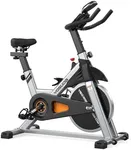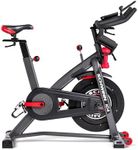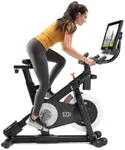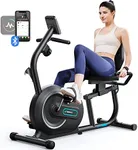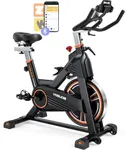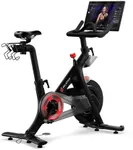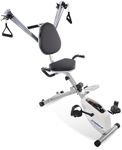Buying Guide for the Best Bikes For Exercise
Choosing the right exercise bike can make a significant difference in your fitness journey. Whether you're looking to lose weight, improve cardiovascular health, or build muscle, the right bike can help you achieve your goals more efficiently and comfortably. When selecting an exercise bike, consider the following key specifications to ensure you find the best fit for your needs.Type of BikeExercise bikes come in three main types: upright, recumbent, and indoor cycling (spin) bikes. Upright bikes are similar to traditional bicycles and are great for general fitness. Recumbent bikes have a reclined seating position, providing more back support and comfort, making them ideal for those with back issues or limited mobility. Indoor cycling bikes are designed for high-intensity workouts and mimic the feel of road biking, perfect for serious cyclists or those looking for intense cardio sessions. Choose the type that aligns with your fitness goals and comfort preferences.
Resistance MechanismThe resistance mechanism determines how challenging your workout will be. There are three main types: magnetic, friction, and air resistance. Magnetic resistance is quiet and offers smooth, adjustable resistance levels, making it suitable for home use. Friction resistance uses brake pads to create resistance and can be noisier but is often found in more affordable models. Air resistance increases with pedaling speed, providing a more natural and intense workout, ideal for high-intensity training. Consider your workout intensity and noise tolerance when choosing the resistance type.
AdjustabilityAdjustability refers to how much you can customize the bike to fit your body. This includes seat height, handlebar position, and pedal straps. Proper adjustability ensures a comfortable and ergonomic riding position, reducing the risk of injury and improving workout efficiency. If multiple people will be using the bike, look for models with easy and quick adjustments. Test the bike to ensure it can be adjusted to fit your height and body type comfortably.
Display and Console FeaturesThe display and console features provide important workout data such as time, distance, speed, calories burned, and heart rate. Advanced models may offer additional features like pre-set workout programs, Bluetooth connectivity, and compatibility with fitness apps. These features can help you track your progress, stay motivated, and achieve your fitness goals. Consider what data and features are important to you and choose a bike with a console that meets your needs.
Weight CapacityWeight capacity indicates the maximum user weight the bike can safely support. It's important to choose a bike with a weight capacity that exceeds your body weight to ensure stability and durability. Most exercise bikes have a weight capacity ranging from 250 to 350 pounds. If you are on the heavier side, look for bikes with higher weight capacities to ensure safety and longevity.
Footprint and StorageThe footprint refers to the amount of space the bike occupies. If you have limited space, consider a compact or foldable model that can be easily stored when not in use. Measure the area where you plan to place the bike and compare it to the bike's dimensions to ensure a good fit. Additionally, consider the bike's weight and whether it has transport wheels for easy movement.
ComfortComfort is crucial for an enjoyable workout experience. Look for features such as padded seats, ergonomic handlebars, and smooth pedaling motion. If possible, test the bike to ensure it feels comfortable during use. A comfortable bike will encourage you to use it regularly and help you stick to your fitness routine.
